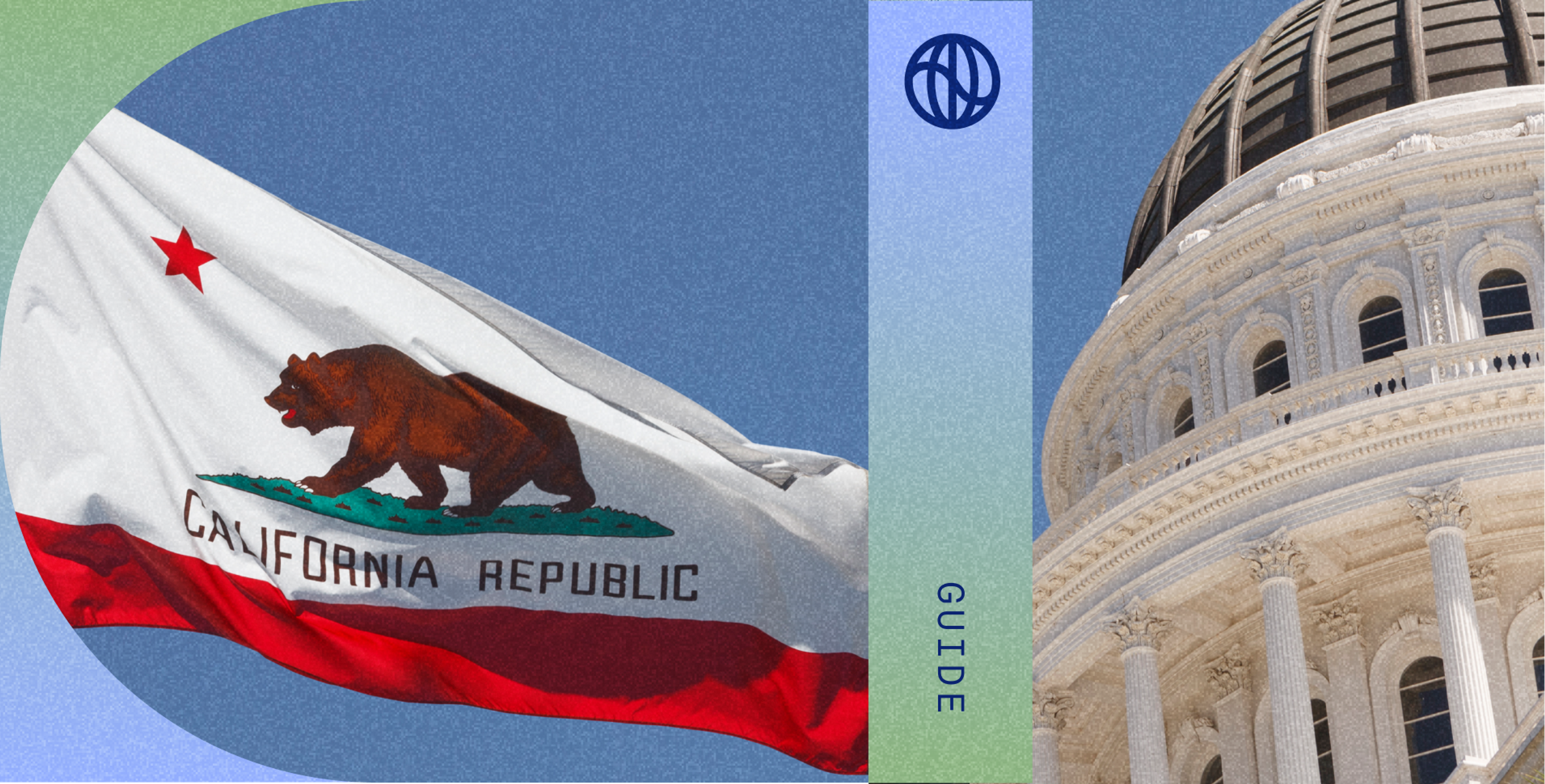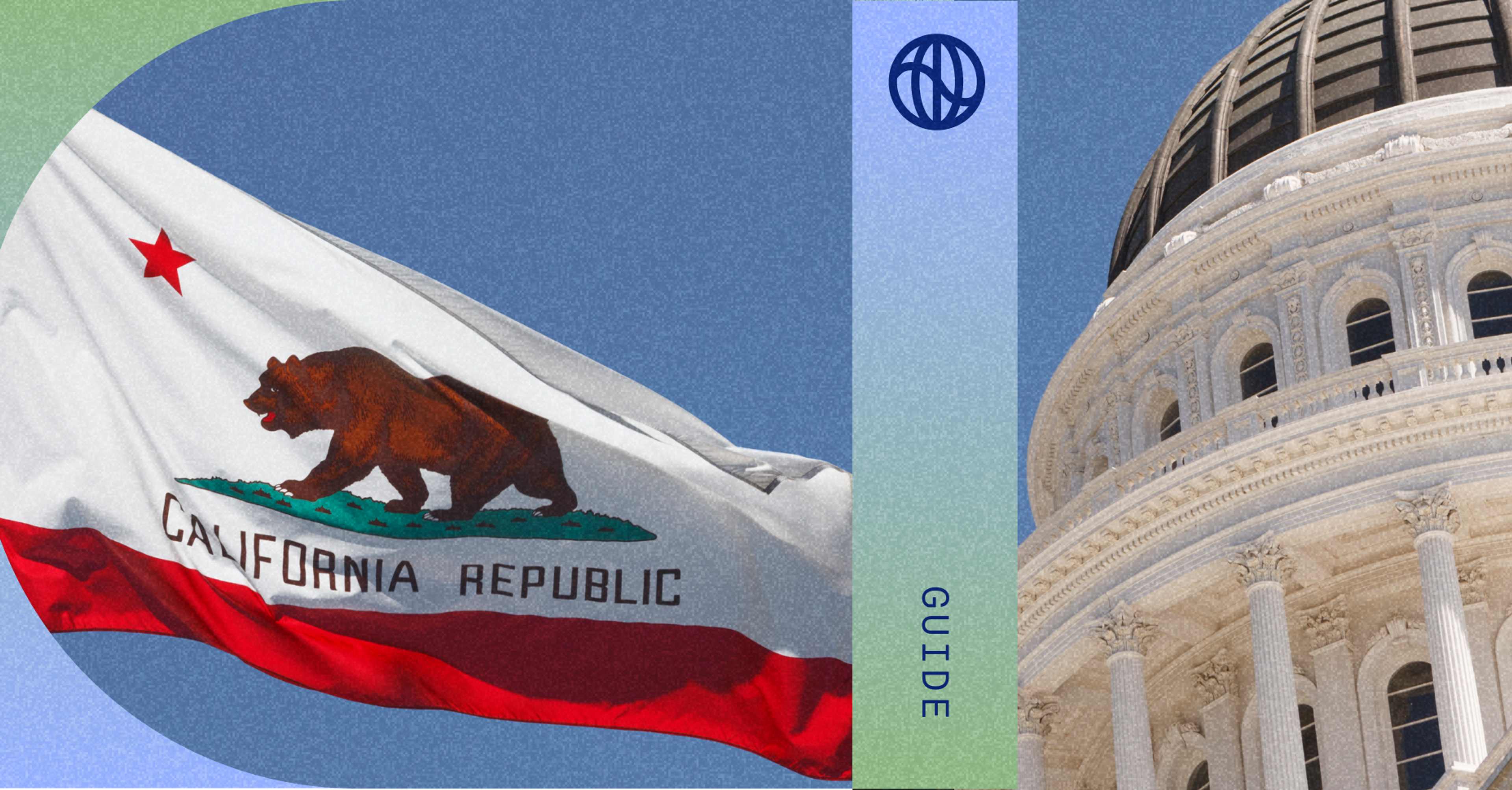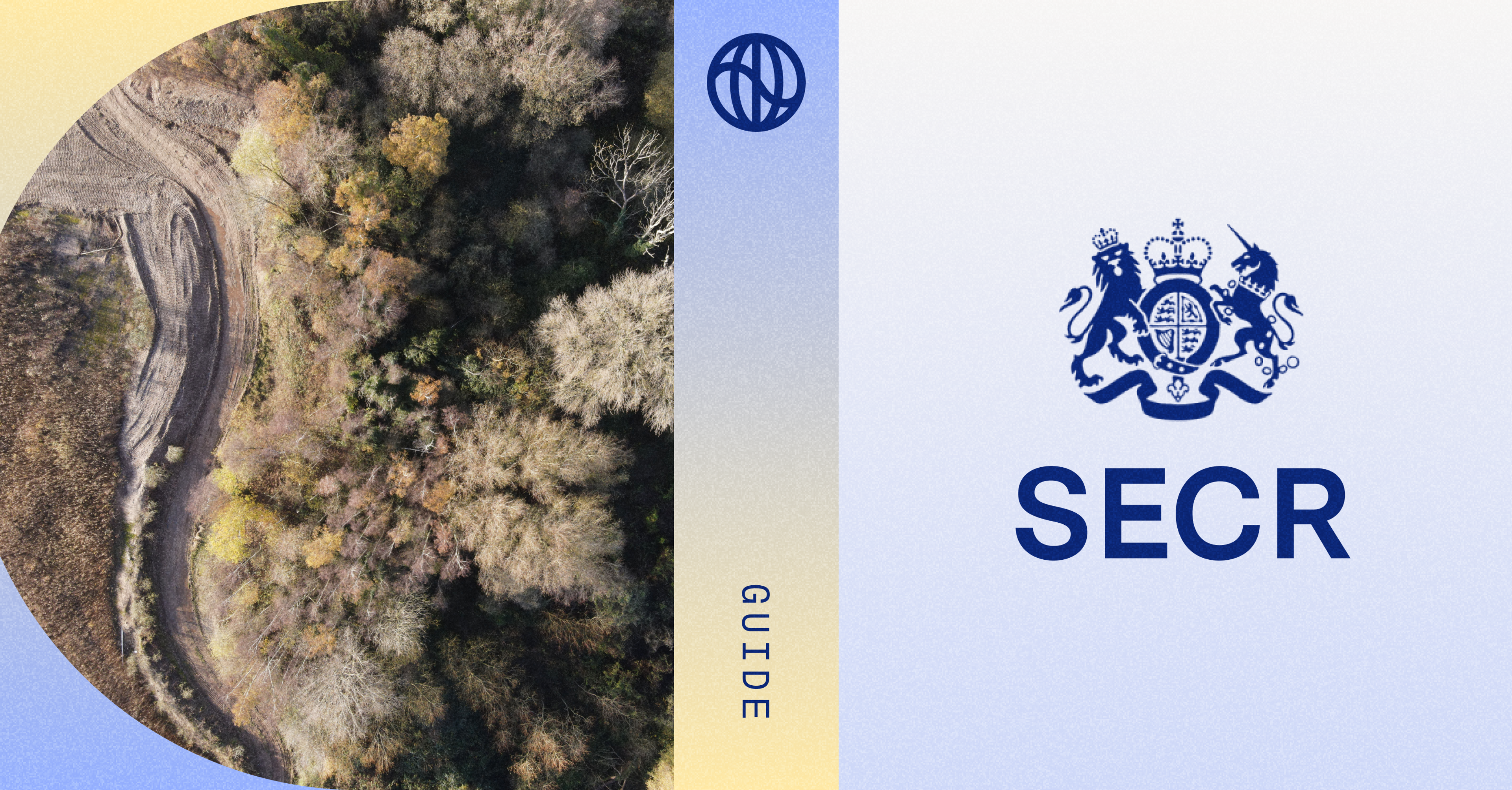The CCDAA, or Climate Corporate Data Accountability Act, is California's climate disclosure law that requires US based public and private companies doing business in California to disclose their scope 1, 2, and 3 emissions, beginning in 2026 on 2025 data.
As 2026 approaches, thousands of companies are starting to get their data and teams ready for this impactful regulation. If you are just beginning to understand the CCDAA, we recommend starting with our guide for companies here. To help answer some of the common questions arising from preparing for CCDAA, we’ve tapped Ulysses Smith, senior advisor on ESG regulations at Debevoise and Plimpton, LLP. Ulysses was assisted by his colleague Amy Pereira, an associate in Debevoise and Plimpton’s capital markets group. Below we'll share their informed perspectives on some of the detailed aspects of this important regulation.
Before we begin, a note on terminology—the CCDAA has been known by several different acronyms in the course of being agreed and amended, and used to be two separate laws that have now merged into one. The final bill that legislated for the rules is known as SB 219, and you may sometimes see reference to the original bills SB 253 and SB 261. For simplicity in this explainer post, we’ll refer to the collection of regulations as CCDAA. In this guide, you’ll also see us refer to the California Air Resources Board, or “CARB”, which is the primary state agency responsible for regulating air pollution and addressing global climate change in California.
Let’s begin with some of the most common questions we’ve heard from companies preparing for the CCDAA. Please note: these answers represent our best assessment at the time of publication and should not be taken as legal advice.
How is “doing business in California” defined by this rule?
SMITH: Neither the CCDAA nor the California Air Resources Board (“CARB”) has defined “doing business in California” under the law. The legislative history of the Act points to California Revenue and Tax Code Section 23101 which defines “doing business” quite broadly as actively engaging in any transaction for the purpose of financial or pecuniary gain or profit in California; being “organized or commercially domiciled” in California; or having California sales, property or payroll above specified amounts. CARB is expected to clarify the definition of “doing business in California” when it issues the implementing regulations for the Act.
Is it reasonable for companies to work on the basis that “doing business in California” is likely to be drawn from the California Revenue and Tax Code?
SMITH: It is anticipated that the definition of “doing business in California” will be adapted from the Tax Code, but companies should carefully review the implementing regulations once issued. In its December 2024 solicitation for public comments on the CCDAA, CARB sought input on whether the Tax Code definition should be adopted. Under this definition, companies with even minimal connections to California could be considered “in scope” and subject to the reporting requirements under the CCDAA.
How should companies with complex organizational structures assess the applicability of the CCDAA to their business?
SMITH: Reporting requirements for each company should be assessed on a case-by-case basis. When mapping out reporting obligations, companies should first identify which entities in their organizational structure are “reporting entities” under the CCDAA. If multiple entities are subject to the CCDAA, subsidiary reporting entities may consolidate disclosures at the parent company level.
Only entities that are formed under the laws of any U.S. state or the District of Columbia, or under an act of Congress, with total annual revenues exceeding the relevant threshold and doing business in California, are subject to the CCDAA. Therefore, subsidiaries of non-U.S. parent companies that meet this definition will be subject to the Act.
What are the compliance deadlines for each part of the CCDAA and how will those disclosures be published?
| Compliance Deadline | Publication Method | |
|---|---|---|
| Emissions Disclosures | Scope 1 and 2 Emissions: 2026 (Precise deadline to be confirmed by CARB) Scope 3 Emissions: 2027 (Precise deadline to be confirmed by CARB)* | Annually submitted directly to a database to be established by CARB or by a separate emissions reporting organization** |
| Climate-Related Financial Risk Report | On or before January 1, 2026 | Biennially on company’s own website |
* The September 2024 amendments to the CCDAA removed the requirement for a reporting company to disclose Scope 3 Emissions no later than 180 days following disclosure of Scope 1 and 2 emissions.
** The CCDAA authorizes, but does not require, CARB to engage a separate emissions reporting organization to assist with developing a reporting database to receive and make disclosures publicly available. CARB is expected to clarify the disclosure publication method in the implementing regulations.
What are the CARB’s implementing regulations expected to cover? How should companies approach any remaining ambiguity?
SMITH: The implementing regulations are expected to clarify matters such as:
- The definition of “doing business in California” for purposes of determining application of the CCDAA;
- The method of calculating annual revenue for purposes of meeting the financial thresholds specified in the Act;
- The relationship between the CCDAA and protocols or standards published by external and non-governmental entities that govern emissions disclosures and/or climate-related risk reporting;
- The standards for data collection and reporting, including assurance review requirements, and the publication method for emissions disclosures;
- The specific timing of the initial Scope 1 and 2 GHG emissions disclosure due in 2026 and the initial Scope 3 GHG emissions disclosure due in 2027; and
- Administrative penalties for violations of CCDAA reporting obligations.
The existing compliance deadlines are unlikely to be amended by the implementing regulations. To the extent that any ambiguities remain following the issuance of the implementing regulations, the TCFD framework will be a useful point of reference for reporting entities.
What happens if CARB does not issue the implementing regulations by July 1?
SMITH: If CARB does not issue the implementing regulations by July 1, it may publish an Enforcement Notice similar to the Enforcement Notice published by CARB in December 2024. In that notice, CARB announced that it will exercise enforcement discretion for the first reporting cycle in 2026 relating to Scope 1 and Scope 2 GHG emissions disclosures. It is possible that CARB may use such a Notice to extend the enforcement discretion period to provide additional leniency.
The CCDAA requires certain companies to disclose climate-related financial risks that are consistent with the Final Report of Recommendations of the TCFD. What does this mean in practice?
SMITH: Certain companies doing business in California are required by the CCDAA to prepare and publish reports that disclose their climate-related financial risks in accordance with the recommended framework and disclosures contained in the Final Report of Recommendations of the TCFD (June 2017). Some companies are choosing to report against the full TCFD framework as an extension of their CCDAA reporting. However, CARB has solicited information about the climate-related financial risk disclosures that companies are currently making and how such disclosures differ from the TCFD framework, and it may clarify this provision of the CCDAA in the implementing regulations.
The CCDAA is subject to an ongoing legal challenge at the state level. Do companies still need to prepare to report under the CCDAA?
SMITH: Notwithstanding the litigation, CARB continues to progress its implementation work and companies should continue to prepare for compliance with the CCDAA on the current timelines.
The CCDAA has been challenged on three grounds: (i) it violates the First Amendment to the U.S. Constitution by compelling speech; (ii) it is preempted by federal law (including the Clean Air Act) and thus violates the Supremacy Clause of the U.S. Constitution; and (iii) it violates constitutional limits on extraterritorial regulation by attempting to regulate GHG emissions beyond California’s borders.
With respect to (i) above, in its Order denying plaintiff’s Motion for Summary Judgment, the U.S. District Court for the Central District of California held that the CCDAA compels speech under the First Amendment, but that additional discovery is needed prior to determining what level of scrutiny (strict or intermediate) should apply.
With regard to the emissions disclosure requirements, in its Order Granting CARB’s Motion to Dismiss plaintiffs’ second and third causes of action, the court held that the plaintiffs’ challenges were not yet ripe for judicial review because the law mandates action by CARB but does not itself impose any requirements on the plaintiffs. Since CARB has not yet put forth the regulations required under the law, the court held that the challenges were not yet justiciable. It is possible that we will see a renewed challenge to the emissions disclosure requirements once CARB adopts the implementing regulations.
With respect to the climate risk reporting requirements, the court held that the plaintiffs had standing to challenge the law and that their challenges were ripe for judicial review because the law imposes requirements directly on the plaintiffs. However, the court dismissed plaintiffs’ claims under grounds (ii) and (iii) above, although leave was given under (iii) to allow plaintiffs to amend their complaint (see the Court’s Order linked here).
In addition to the ongoing legal challenge at the state level, the CCDAA may be subject to challenge by the federal government following the issuance of the President’s Executive Order targeting state climate change regulations. The Order, titled “Protecting American Energy from State Overreach,” requires the Attorney General to identify potentially burdensome state laws purporting to address climate change and to expeditiously take action to stop their enforcement, including recommending any additional executive or legislative action. The Order principally focuses on regulations aimed at limiting emissions by imposing penalties on energy companies. The Order specifically references California’s greenhouse gas emissions cap-and-trade program but does not explicitly call out the CCDAA.
Given the broad scope of the Order, it is possible that the Attorney General will identify the CCDAA as a relevant state law. If such identification is made, the federal government may argue that the Clean Air Act preempts regulation of emissions disclosures at the state level, similar to the argument advanced by plaintiffs in the ongoing litigation. The Central District of California did not rule on the preemption argument with respect to the CCDAA’s emissions disclosure requirements in light of its holding that those claims were not yet ripe for judicial review. The court did consider plaintiffs’ preemption arguments with respect to the CCDAA’s climate risk reporting requirements. The court held that plaintiffs failed to prove that CARB intends to directly regulate emissions through the CCDAA’s climate risk reporting requirements as the law imposes disclosure requirements but does not require any actual reductions in emissions by reporting companies. The preemption claims were ultimately dismissed with prejudice. Given the court’s holding, if CARB faces a similar preemption challenge from the federal government, CARB could argue that the CCDAA disclosure regime is not intended to replace the regulatory scheme of the Clean Air Act and is not subject to preemption.
If a company produces climate reporting to comply with other reporting rules like the EU’s CSRD, will the company be able to use that reporting to comply with the CCDAA?
SMITH: In principle, the CCDAA is designed to avoid duplication in emissions reporting and companies will be able to comply with the requirements of the Act by preparing comparable, publicly accessible reports or disclosures. CARB may clarify which reporting regimes are considered comparable to the CCDAA in the implementing regulations. It is possible that the CSRD can be used to satisfy reporting requirements under the CCDAA, however given the upcoming January 1 compliance deadline for climate-related risk reporting, reporting entities should assume that they will need to produce a separate set of disclosures even if they report under the CSRD.
Update: Answers from the May 29th CARB Workshop
The following answers have been added as a result of new information from the CARB guidance delivered at the end of May 2025. All explanations are provided by the Watershed policy team who attended the briefing. You can read a full summary of the workshop content here.
Are the compliance dates for SB 253 and SB 261 still 2026?
Yes. SB 253 will be required in 2026, though the exact date hasn’t yet been given. For SB 261, CARB confirmed that reports are due by January 1, 2026. While CARB has promised to continue sharing more information on both throughout the year, SB 261 differs in not explicitly requiring implementing regulations from them.
When will more guidance be issued?
CARB continues to seek public engagement and aims to issue detailed guidance by the end of the year. As had been widely expected, they will not meet the July 1 deadline for implementing regulations, but continue to seek stakeholder engagement and will provide updates over the coming months.
Who will be captured by the regulations?
Not fully resolved. CARB has laid out initial proposals on the key definitions to align with the Californian Revenue and Tax Code, but are actively seeking public comments on their proposals. It remains unclear for instance whether revenue would be specific to the Californian business or the business as a whole.
Will this be enforced?
Yes. Both bills have been passed into law. CARB has discretion on how to enforce them both and has stated that there will be no penalties for SB 253 reports in the first year, so long as entities can show a good faith effort to comply.
Will there be materiality thresholds for certain scope categories?
Not currently, but unclear. CARB highlighted that many public responses called for materiality thresholds for scope 3 emissions. They also stated that they want to avoid overburdening companies – though noted that they have to balance this with the need for accuracy and specificity.
Will companies need to provide a full TCFD or ISSB report for SB 261 reporting?
CARB reiterated that it wants to use existing report structures, specifically TCFD and/or ISSB. However, both of these are voluntary frameworks and CARB is required to use certain language when writing regulations to provide the right level of clarity. It therefore acknowledged that it is considering options and will provide more updates shortly, but didn’t provide any update on the suggested format or scope.
Did the meeting address the current legal challenges to both laws?
No. That said, part of the lawsuit against the bills has already been dismissed, while the timeline for the remainder of the lawsuit looks likely to continue past the first compliance dates.
Hopefully the perspective provided here on common CCDAA questions will be helpful. We'll keep this page updated as some of the unresolved items above are resolved and to incorporate more questions as they arise. Keep an eye on the last updated date at the top of the page. Thank you to Ulysses Smith and Amy Pereira of Debevoise and Plimpton, LLP for sharing their points of view on these important topics for corporate sustainability teams.












